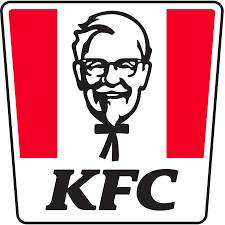The History of KFC: From Humble Beginnings to Global Icon
Kentucky Fried Chicken, commonly known as KFC, is a fast-food giant renowned for its fried chicken and secret blend of spices. Its journey from a small gas station to an international powerhouse is a fascinating tale of innovation, perseverance, and strategic marketing.
The Origins: Colonel Sanders
The story begins in the 1930s with Harland Sanders, born on September 9, 1890, in Henryville, Indiana. After a tumultuous childhood and various jobs, Sanders opened a service station in Corbin, Kentucky, during the Great Depression. This location served not only gas but also home-cooked meals. It was here that Sanders developed his culinary skills, particularly his fried chicken, which quickly became popular among travelers.
By 1940, Sanders had perfected his recipe, combining 11 herbs and spices, which would later become the foundation of KFC's brand identity. He began selling fried chicken from a small restaurant he opened adjacent to his service station, where his meals were prepared using a pressure cooker. This method significantly reduced cooking time while enhancing flavor and moisture.
The Birth of the KFC Franchise
In 1952, Sanders recognized the potential of franchising his fried chicken business. He opened the first official KFC franchise in Salt Lake City, Utah, with Pete Harman, a local friend and restaurateur. The success of this franchise led to rapid expansion; by the end of the decade, KFC had established multiple outlets across the United States.
Sanders's charismatic personality and unique marketing strategies helped popularize the brand. He famously adopted the title of "Colonel," which was an honorary title awarded by the Commonwealth of Kentucky, and he leveraged this persona to create a strong brand image. His white suit and black string tie became iconic, making him the face of KFC.
Growth and Global Expansion
The 1960s marked a significant turning point for KFC. In 1964, Sanders sold the company for $2 million to a group of investors led by John Y. Brown Jr. Despite stepping back from day-to-day operations, Sanders remained a prominent figure and continued to promote the brand. Under the new ownership, KFC expanded internationally, opening its first store outside the U.S. in Canada in 1965.
The brand's expansion strategy was innovative. KFC adapted its menu to cater to local tastes in different countries, which contributed to its global appeal. For example, in Japan, KFC became synonymous with Christmas celebrations, and in India, the menu features items like the Chicken Maharaja Mac to appeal to local preferences.
The 21st Century and Beyond
In the 1980s and 1990s, KFC faced increased competition and challenges related to changing consumer preferences toward healthier eating. The brand responded by introducing grilled chicken and various sides to its menu. Despite these challenges, KFC continued to thrive, thanks in part to its strong marketing campaigns and commitment to quality.
In 2002, KFC became part of Yum! Brands, Inc., which also owns Taco Bell and Pizza Hut. This acquisition provided KFC with additional resources and a broader platform for expansion. Today, KFC operates over 25,000 restaurants in more than 145 countries, making it one of the largest fast-food chains in the world.
Legacy of the Colonel
Colonel Sanders passed away in 1980, but his legacy lives on through KFC. The brand remains committed to its original recipe, which is still a closely guarded secret. KFC's success story is a testament to the power of entrepreneurship, innovation, and adaptability in a constantly changing market.
Today, KFC is more than just a fast-food restaurant; it is a cultural icon. From its distinctive branding to its global menu, KFC continues to evolve while staying true to its roots. As it looks to the future, KFC remains dedicated to delivering quality food and maintaining its reputation as "finger-lickin' good."


